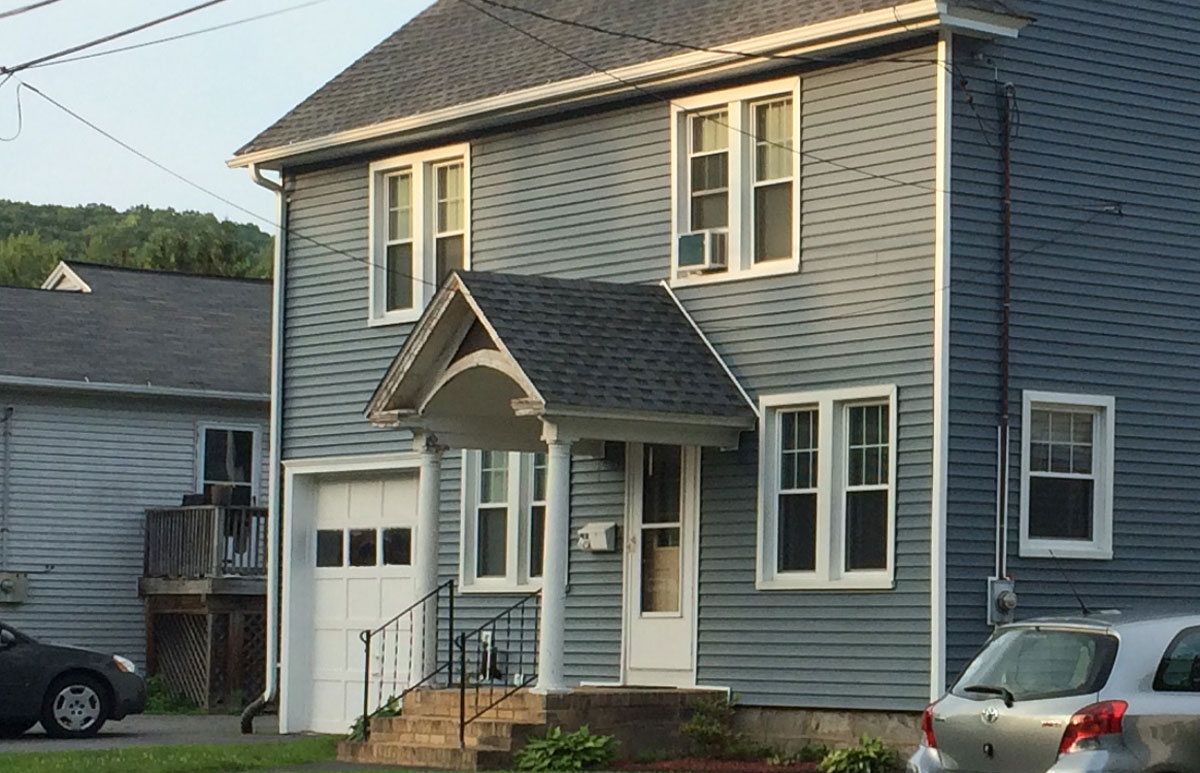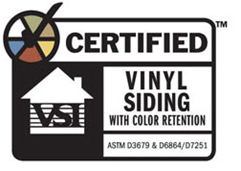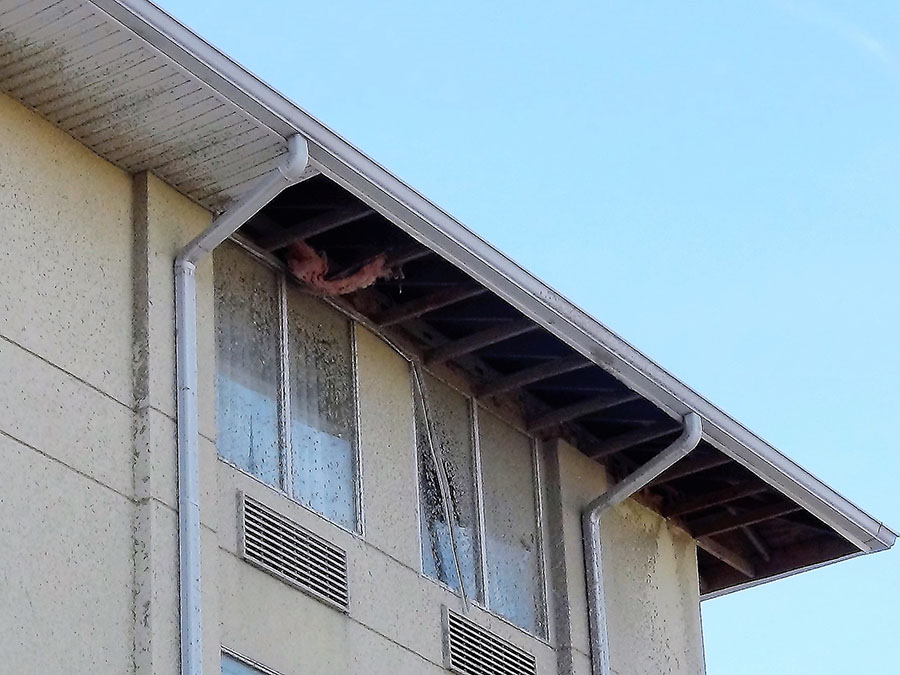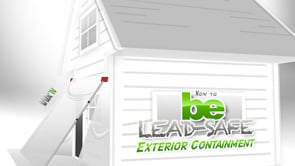
Bright and dark colors used to be bad choices for vinyl, but better polymers and manufacturing process have reduced fading, cracking, and expansion.
One common question about vinyl siding is whether it will fade. There is a perception that because of fading, you cannot use dark colors or they will bleach out into a pastel wash. A related question about dark colors is whether they will soak up the sun, deform, and curl.
This may have been the case 20 years ago, but newer manufacturing processes have considerably reduced these effects. When I say 'newer' I do not mean as of yesterday, either. The house pictured above was built (and photographed) ten years ago, so I have been specifying dark colors of vinyl siding for quite some time.
A tough outer 'layer' is like a helmet. No, really
Used to be that vinyl siding was a single piece of plastic—vinyl siding factories blended polyvinyl chloride (PVC) with colors and other ingredients in a single batch and extruded the final product as a homogenous material.
Now, a polymer blend is fused—not painted on or added later—onto the PVC substrate. This tough, hard-wearing “capstock” on the exposed face of the siding comprises some 10 to 15 percent of the thickness of the siding and cannot be pealed or scraped off, nor will it wear off, flake, or chalk.
As material science and manufacturing technology advanced, the vinyl siding industry developed polymer blends that improved their products' performance. The recipes used vary by manufacturer and are closely guarded secrets, but all share the same characteristics that make vinyl more durable than it used to be.
Acrylic polymers fend off UV better
Speaking with a professional materials engineer from the vinyl siding industry (who requested anonymity because it’s too tough to get the PR folks at his big company to authorize quotes), I learned that in 2000, siding manufacturers began using polymers like acrylics and acrylate styrene acrylonitrile (ASA). #mouthful.
NERD ALERT: ASAs are amorphous plastics with mechanical properties similar to those of acrylonitrile butadiene styrene (ABS) resins; however, ASAs are far less affected by outdoor weathering than PVC or ABS. (Read more here.)
Breaking it down for the rest of us, acrylics are a family of plastics used when high color definition and high UV resistance are needed (eye glasses, brake lights, road signs). ASA polymers maintain favorable colorfast characteristics while combining the impact resistance and mechanical toughness of ABS plastics (plumbing pipe, automotive bumpers, helmets, whitewater canoes).
col·or·fast | (kŭl′ər-făst′) | adj.
Having color that will not run or fade with washing or wear: a colorfast fabric.
col′or·fast′ness n.—American Heritage Dictionary
These 'siding helmets' improve UV protection, colorfastness, dimensional stability, and impact resistance. To improve product performance even further, manufacturers sometimes incorporate infrared-reflecting pigments, similar to “cool-roof” materials that minimize heat buildup, especially in the deeper-tone sidings. Reduced heat helps to increase thermal distortion resistance—warp-proofing.
Everything fades in the sun, but how much and how fast?
So what does this have to do with color? I spoke with another anonymous industry representative trying to get a clear read on what color fastness means in terms of vinyl siding, and what consumers can expect. I dug deep, because as far as I know, all products exposed to enough weathering and sunlight will eventually fade. How much and how soon are the real questions to ask, to which the vinyl siding industry generally responds with the ambiguous guanantee that colors will perform, “Within acceptable parameters for the life of the product.”

But who determines “acceptable parameters”?
It turns out there is a fascinating industry focused on providing those answers, not just for vinyl siding, but all kinds of products from automobile finishes to window awnings. Using an instrument called a spectrophotometer to measure color differences and reflectance, scientists can describe the color in three distinct directions: dark to light (L-value), green to red (a-value), and yellow to blue (b-value).
The colors can be assigned an “L-a-b value” and plotted in three dimensions as a baseline for color testing. The amount of color change in a weathered sample is measured in the L, a, and b directions and used to calculate an overall color change “score.”
Using general studies of human perception and specific industry research on how much color change homeowners would find to be acceptable, numeric limits were placed on the acceptable degree of measured color change. These limits, which are quite narrow and strict, along with the process for measuring and calculating color change, were eventually incorporated into detailed standards published by ASTM International.
Manufacturers must comply with these standards to certify colorfastness.
This does not mean you can put a brand new piece of vinyl siding against a 10-year old, weathered piece and not notice a difference, but it does mean your house will remain pretty much the same color without objectionable change. And while it sounds a little vague, the testing is rigorous and it’s as good as it gets with products that are constantly exposed to the elements.

Spoiler alert: ASTM has a test for it
To make sure your siding complies with the strictest industry standards, choose siding with an ASTM International (formally American Society for Testing and Materials) label stamped on the box. This will include one of three colorfastness references, depending on the siding, including ASTM D6864 or D7251, which are being phased out in favor of a new standard, ASTM D785 6.
Other ASTM standards that apply to vinyl siding exist, but you can recognize the color certification by looking for the Vinyl Siding Institute’s color wheel logo that indicates the product has met the corresponding ASTM standards and ongoing third-party testing protocols. This certification requires a multi-year “weathering test” in three locations of the US followed by periodic, random third-party inspections to verify product quality.
It’s the “USDA” Grade “A” of the siding industry.
Bottom line:
Look for the VSI color wheel logo on the box and if you are choosing bold colors of vinyl siding colors.
For more information on color retention and siding quality, you can visit the siding industry trade organization, which did not request anonymity, at www.vinylsiding.org.
— Fernando Pagés Ruiz is ProTradeCraft's Latin America Editor. He is currently building a business in Ecuador and a house in Mexico. Formerly, he was a builder in the Great Plains and mountain states. He is author of Building an Affordable House and Affordable Remodel (Taunton Press).












